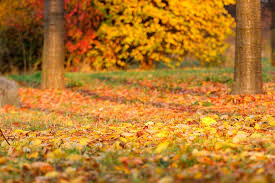
By Anita Weier
Friends of Cherokee Marsh
The beautiful colors of autumn contribute to the ugly green color of our lakes in summer unless residents manage fallen leaves properly. Leaves that are washed into the lakes contain nutrients that contribute to algae growth.
City waste-control officials stress that leaves should not be put in the street. Instead, pile leaves and yard waste (not mixed with brush) at the street edge for collection. But beware that when you pile your leaves at the curb for city collection each fall, those leaf piles are exposed to rain which seeps through the piles, making a rich nutrient tea that flows along the curb into storm drains and then to the lakes. Those nutrients are a significant contributor to the algae that turns our lakes into a green smelly mess in the summer.
You are not required to bag or cover your leaves. They can be left loose at the curb for collection, but uncovered leaves can be blown into the street. Also, city equipment used to pick up leaves can destroy much of the grass below them. Bagging leaves is better, and compostable paper leaf bags are best. Leave bags open at the top so city workers can see what is inside. Plastic bags will be left loose on the terrace and some may be cut open. An alternative is covering your leaf piles with a tarp or plastic sheeting to prevent them from blowing away.
Leaves and yard waste may also be taken to city drop-off sites. The closest is 4602 Sycamore Ave.
A solution encouraged by city officials is managing leaves on your property. The Leave the Leaf program is designed to reduce phosphorus runoff from leaves, improve the quality of area soil and lawns and reduce the need for more leaf collection trucks and staff. Leaves left on the lawn can reduce the use of chemical fertilizers. Leaves also make great mulch, garden cover or rich compost. Though you may not be able to compost or mulch all leaves onsite, any amount of leaves you can handle at home will benefit the environment and save tax dollars.
Many people mulch grass clippings back into the lawn. Doing so provides valuable nutrients for our lawns and reduces trips to the yard waste drop-off sites. Mulching leaves back into your lawn does the same and also eliminates time spent raking.
City staff advises using your mower to mulch leaves into your lawn. Mowers cut leaves into small pieces, allowing them to fall into the grass canopy instead of resting on it. Studies have concluded that lawns in which leaves are mulched into the grass are healthier and have fewer weeds.
More tips are available at www.ripple-effects.com/leaf-free-streets.